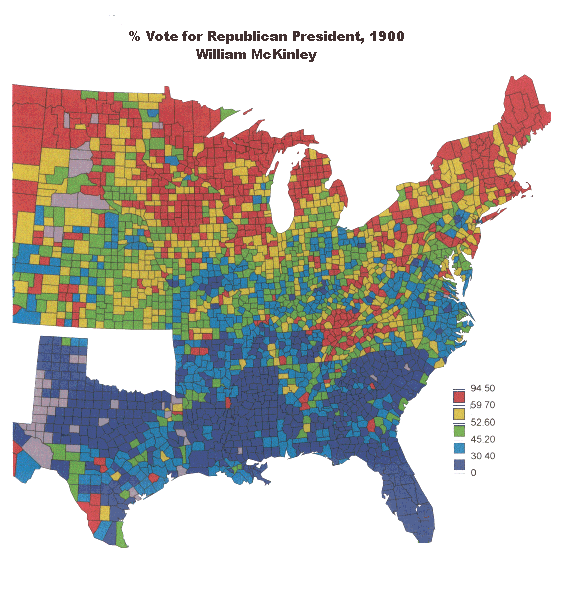|
Between 1890 and 1908,
every state in the Deep South adopted a new state constitution, explicitly
for the purpose of disenfranchising blacks. Various devices were used--poll
taxes, literacy tests, arbitrary registration practices, felony disenfranchisement
(for only those crimes that blacks disproportionately committed). Note
the resulting vitual elimination of the Republican vote in S. Carolina,
Florida, Mississippi, and Louisiana. By comparison, Alabama and Georgia
appear anomalous in the region--until one realizes that Alabama was not
to pass its new state constitution until 1901, and Georgia not until 1908.
To learn more, see
J. Morgan Kousser, The Shaping of Southern Politics: Suffrage Restrictions
and the Establishment of the One-Party South, 1880-1910 (Yale University
Press, 1974).
|
|
| White
turnout also plummetted due to disenfranchisement. Outside of N.C., Tennessee,
and Arkansas, a minority of whites turned out in the post-disenfranchisement
elections between 1900-1910. In the 1904 presidential election, only 29%
of all adult males in the South voted, compared to 65% in the North.
Kousser argues that the disenfranchisement of poor whites was not a mere
unintended consequence of laws primarily intended to exclude blacks: support
for disenfranchisement was strongest among rich white Democratic farmers
in the black belt, often opposed by poor whites, and rationalized by antidemocratic
ideas that equated poverty and illiteracy with political incompetence. Not
just race and class but partisan interests underwrote disenfranchisement:
the Democratic party was the main force behind disenfranchisement, and the
major restrictive laws were passed at times of significant Republican and
Populist challenge to Democratic dominance. |
|
|
|
|
